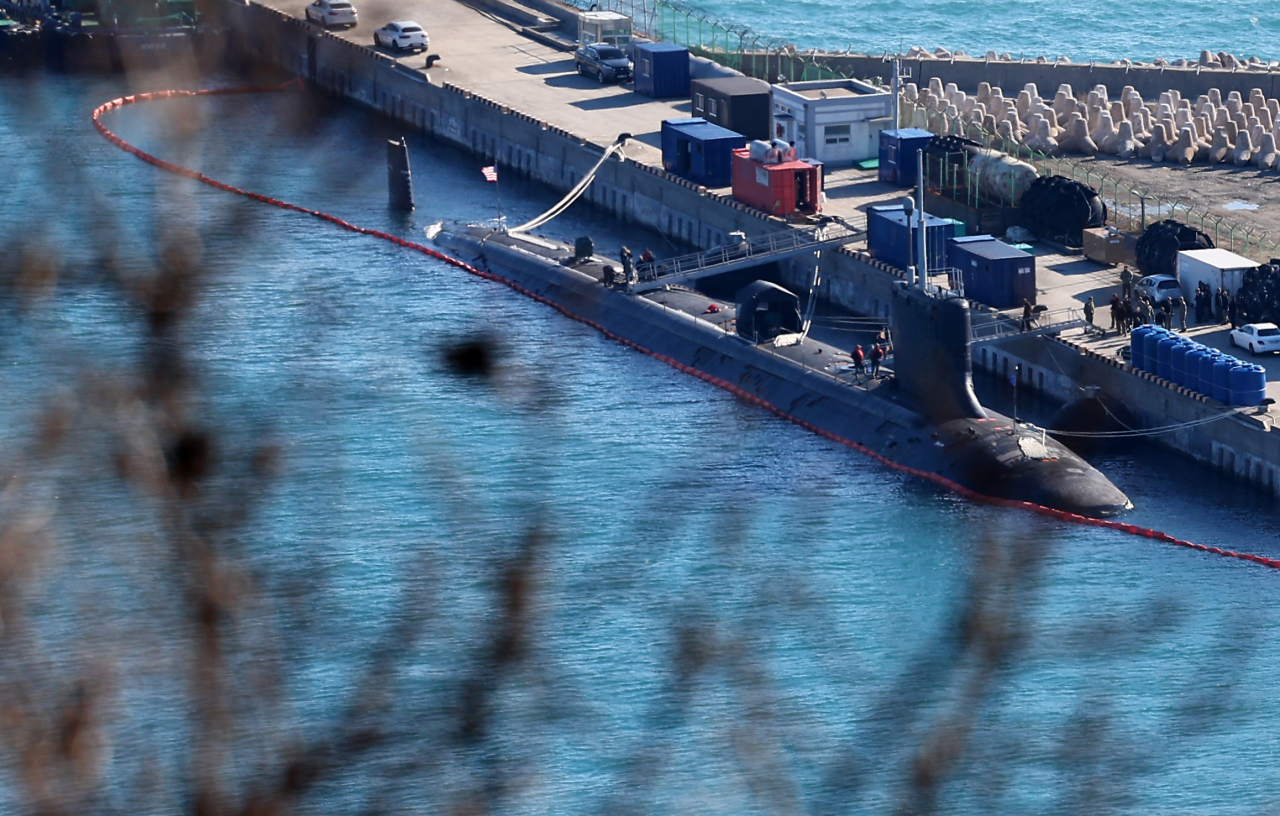Yoon orders ‘instant response’ to North Korean provocations after ICBM firing
By Kim ArinPublished : Dec. 18, 2023 - 09:54

President Yoon Suk Yeol on Monday asked his national security team for an “instant and overpowering response to any North Korean provocations” following the launch of an intercontinental ballistic missile by Pyongyang earlier in the day, which raised military tensions on the peninsula.
The North’s fifth ICBM launch of the year was fired into the sea off the east coast of the Korean Peninsula on Monday morning, as previously predicted by a senior Seoul official last week.
In a National Security Council meeting called hours after the test-firing, the president said three-way cooperation with the US and Japan would be bolstered with the real-time North Korean missile data scheme to be activated soon.
South Korea’s Joint Chiefs of Staff said the ICBM was fired eastward from Pyongyang at around 8:24 a.m. Monday and traveled some 1,000 kilometers before falling into the sea. The JCS said the ICBM used solid fuel. Less than half a day prior at around 10:38 p.m. Sunday, North Korea had also launched a short-range missile into the sea east of the peninsula.
The JCS condemned the missile firing by the North as a “clear violation” of relevant United Nations resolutions and a “grave act of provocation that threatens the peace and security on the Korean Peninsula and beyond.”
The top nuclear envoys of South Korea, Japan and the US also held talks by phone and labeled North Korea’s illicit nuclear ambitions as the “root causes” of security instability in the region, according to the Ministry of Foreign Affairs in Seoul. The ministry said the three envoys agreed North Korea’s provocations would “only lead to a stronger international alliance against Pyongyang.”
Kim Tae-hyo, Seoul’s principal deputy national security adviser, had warned earlier that North Korea may test-fire an ICBM sometime this month. The JCS also said South Korea and the US had been jointly tracking North Korea’s moves leading up to the launch on Monday.
Yang Uk, a defense researcher at the Asan Institute for Policy Studies, told The Korea Herald that both missiles were likely intended to be a message to the US.
“North Korea is trying to say its missiles are able to target the US’ strategic assets in Busan, where the US attack submarine USS Missouri docked at a day earlier,” he said. He explained that the short-range missile fired late Sunday landed 570 kilometers from the point of launch, which is just about the distance to the naval base in Busan.
“With the solid-fuel ICBM, North Korea is demonstrating it can reach the US mainland,” he added.
Based on information from the JCS, Yang said the ICBM appeared to have reached an altitude of at least 6,000 kilometers, flying for more than an hour before landing in the sea. He noted that the last ICBM fired in July also flew as high as 6,000 km, far surpassing the maximum altitude of 3,000 km reached by the ICBM tested just before that in April.
Yang said he did not think Russian assistance was behind North Korea having achieved the unusually high altitude in such a short span of time, as is believed to have been the case with its military reconnaissance satellite success in November.
“It would be a bold move for Russia to provide North Korea with ICBM support, which is an entirely different story than space-related technology, as it would come as a direct violation of the NPT,” he said, referring to the Treaty on the Non-Proliferation of Nuclear Weapons.
He added that North Korea might have reduced the weight of the warheads carried by the ICBMs for the sake of the appearance of its technology having improved.
Kim Dong-yup, a professor of military and security studies at the University of North Korean Studies, told The Korea Herald he did not necessarily think Monday’s ICBM launch was a reaction to the South Korea-US meeting on nuclear deterrence held Friday in Washington.
“If the ICBM is indeed a Hwasong-18, North Korea could be testing its solid-fuel engine, in which case the firing would have been planned long beforehand and the meeting happened to coincide,” he said.
He explained that the short-range missile was a completed weapon that required no additional testing.
“After launching the short-range missile late Sunday, the Defense Ministry in Pyongyang issued a strong condemnation of the meeting in the US. This might be an indication that North Korea fired it as a protest to the bilateral meeting,” he said.
In Seoul, the ruling People Power Party said that with its back-to-back missile firings North Korea was taking aim at South Korea’s strengthened security alliance with the US. The two countries had decided to complete guidelines on their joint response to a potential North Korean nuclear attack over the weekend, as part of the commitment to the Washington Declaration signed by Yoon and his US counterpart Joe Biden in April.
The opposition Democratic Party of Korea echoed the ruling party’s criticism of Pyongyang while also blaming Yoon’s “hawkish North Korea policies” as being responsible for “escalating tensions on the Korean Peninsula.”



















